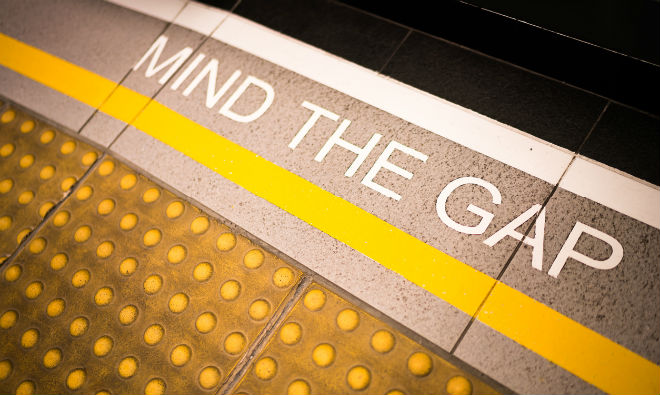BBC China editor Carrie Gracie hit the headlines earlier this year when she resigned from her post in protest of pay inequality within the organisation. The BBC promptly reviewed its pay structure, finding that men at the BBC are paid on average 9.3 percent more than women. And with the first mandatory gender pay gap reports due by 5 April 2018 for businesses with more than 250 employees, we can expect to see more revelations in the coming months.
McKinsey estimates that bridging the UK gender gap in work has the potential to create an extra £150bn on top of business-as-usual GDP forecasts in 2025, and could actually translate into 840,000 additional female employees. But how much do you actually know about the gender pay gap and how it differs from equal pay? Take our quiz to determine the gaps in your knowledge.
1) What is equal pay?
(a) The legal requirement that, within an organisation, male and female staff members engaged in equal or similar work or work of equal value receive equal pay and other workplace benefits.
(b) Giving the same wage to all your workers regardless of the role.
(c) Ensuring the total average wage for men and for women is the same across the company.
2. What is the gender pay gap?
(a) The difference between all the men’s hourly rates and all the women’s hourly rates, irrespective of role.
(b) The difference in hourly pay between a man and woman in a given company doing work of equivalent status expressed as a percentage of men’s earnings.
(c) The difference between all the men’s annual salary and the women’s annual salary.
3. How do companies work out their gender pay gap?
(a) By using a calculation that takes into account a number of variables, including mean and median average wages, bonuses and the proportion of male and female employees and how they are distributed within the company wage hierarchy.
(b) By working out the average monthly pay of male and female employees.
(c) By comparing the salaries of the highest-paid man and the highest paid woman.
4. Your colleague Jimmy is a nice man. He’s hardworking, polite and fun to work with. Hold on, so are you. Why does he earn twice as much per hour than you? How can you find out whether this might be an equal pay or gender pay gap issue?
(a) By comparing your role and responsibilities, qualifications,
length of service, job title (i.e., are you doing the same or an equivalent status job?).
(b) By comparing how long both of you have been at the company.
(c) Looking at how well qualified you both are.
5. What is the current UK gender pay gap for full-time employees according to ONS figures?
(a) 9.1%
(b) 11.2%
(c) 5%
6. Which of these is a commonly cited reason for the gender pay gap?
(a) Women losing out on seniority by taking childcare breaks (the so-called child penalty).
(b) Women tending to be less qualified for senior positions.
(c) Women tending not to ask for pay rises.
7. What percentage of the UK female workforce works part-time?
(a) 41%
(b) 25%
(c) 15%
8. Which companies must now (as of April 2017) publish their gender pay gap and gender bonus gap every year?
(a) All companies with more than 250 employees
(b) All companies, regardless of size
(c) All companies with a turnover of £50m
9. On average, how much less than their male counterparts do female financial managers earn?
(a) They earn 28.4% less
(b) They earn 15% less
(c) They actually earn 2% more
10. At what age is the gender pay gap at its widest for women?
(a) Between 50 and 59
(b) Between 35 and 40
(c) Between 20 and 25
11. When do experts predict the gender pay gap will be eliminated?
(a) 2235
(b) 2077
(c) 2024
ANSWERS
- Mostly As…You are pretty clued up on the differences and seem to know your stuff. Keep abreast of how the UK compares to other countries with our regular news pieces. For inspiration, read about the first country to enforce equal pay, Iceland< – leading the way to change.
- Mostly Bs…You’ve got a bit of a handle on the differences but there are some areas in which you could know more. Read more about the gender pay gap here and keep having conversations with others about their gaps, and what you can do to ensure they get narrower.
- Mostly Cs…Perhaps some of these answers came as a bit of a shock. It just shows what a long way we have to go to narrowing the gender pay gap.
by Hazel Davies





